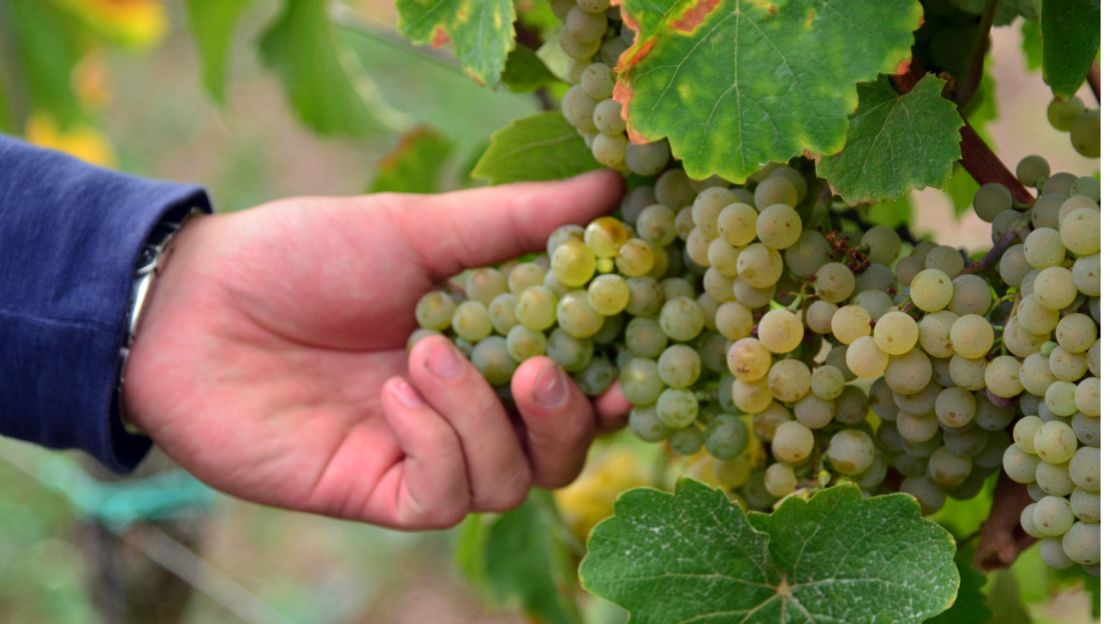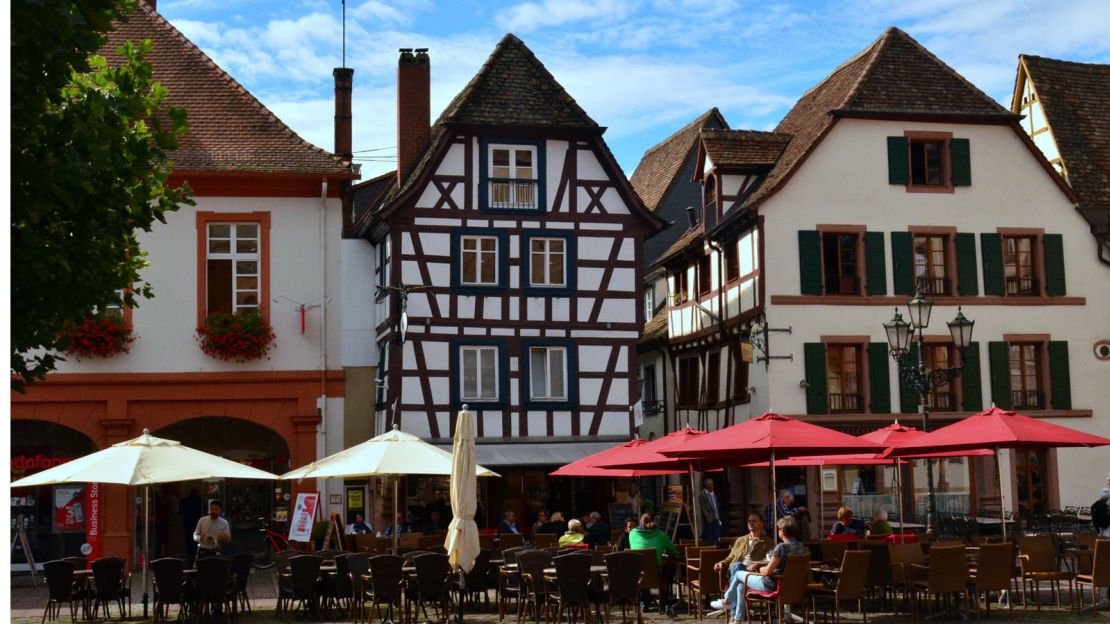Story highlights
Established in 1935, Germany's Deutsche Weinstrasse is the world's oldest wine trail
The trail was originally founded by the local Nazi party chief to attract wine tourists
A new generation of winemakers is reviving interest in the trail, which passes through 37 towns and villages
There are many roads dubbed “‘wine routes:” from the Napa and Sonoma trails in California to Stellenbosch in South Africa and the Murray River Valley in Australia.
However, the first wine route was the Deutsche Weinstrasse, established exactly 80 years ago in the region of Pfalz (Palatinate) and passing through 37 towns and villages in Germany.
Bad Durkheim is where I begin my drive.
It’s a modern German village saved by a large botanical garden, a medieval abbey and the ruins of a 13th-century castle. Just north of the town lies the tidy, sleepy village of Kallstadt, from where Donald Trump’s grandfather Friedrich emigrated to the United States with his wife.
I’ve arrived in the middle of September, when Bad Durkheim stages the Wurstmarkt, which claims to be the biggest wine festival in the world with 600,000 visitors every year.
Hidden artwork
Looking at the tents full of drinkers on long benches, the oompah bands and the funfair rides, I’m reminded of the Oktoberfest. How come so few people outside Germany know about the Weinstrasse and its festivals? The Germans seem reluctant to advertise it.
Why? A clue lies almost hidden in Bad Durkheim’s church, the Ludwigskirche, where a mural behind the altar depicts the crucifixion of Jesus.
Amazingly, no one noticed at the time it was painted that one of the thieves who was crucified with Jesus looks unmistakably like Adolf Hitler, pencil mustache and all.
The artist, Paul Thalheimer, painted this in 1935 before he was forced to flee from Nazi Germany, where he was later banned as a degenerate artist. His apparent act of defiance coincided with local Nazi party chief Josef Burckel’s brainwave to make the area a center for wine tourism.
This backstory has led to the Weinstrasse being known as “a stroke of genius with a problematic provenance.”
Back in 1935, Burckel faced two problems.
Firstly, the wine trade in the surrounding Pfalz region was in the hands of Jewish merchants who were forbidden to work in the Third Reich. Secondly, bumper harvests in 1934 and 1935 led to a collapse in prices.
Wine dream
So Burckel dreamed of a wine route connecting the main wineries on the left bank of the Rhine. It ran for 85 kilometers (53 miles) from the village of Bockenheim to Schweigen on the French border.
Burckel inaugurated the Weinstrasse with a speech in Bad Durkheim on October 19, 1935.
He followed that with an 800-strong motorcade the next day and a heavy wine promotion in German cities. The concept was a hit. Wine sales soared.
World’s best wine trails and tours
Today, the Weinstrasse is as idyllic as it was then, passing by sloping vineyards in the shadow of almond, fig and sweet chestnut trees. It winds through well-kept villages with narrow cobblestone streets, looked upon by stone houses and balconies with overflowing red geraniums.
Deidesheim is the most strikingly picturesque village on the route home to the venerable von Buhl winery.
“Pfalz has had a checkered record of wine production,” says Klaus Kusters, the retail manager, while pouring an excellent Riesling. “After the war they went for quantity, and quality hit rock bottom. The 1970s and 1980s were the days of Blue Nun and Black Tower, supermarket wines marketed via TV adverts in the U.S. and the UK.”
“Yields were astronomical – up to 18,000 bottles per hectare, whereas nowadays they are restricted to a maximum of 9,000. Fewer grapes, stronger flavor.”
Happy accident

The 1990s were the turning point for Pfalz wines. The growers realized that they have to compete worldwide on quality alone. The EU also forced Germany to end its restrictive practices.
Earlier a wine producer had been prosecuted for the very German offense of growing Chardonnay in a Riesling area. Neustadt is the wine metropolis of the Weinstrasse, full of half-timbered houses next to baroque buildings and a church divided into Protestant and Catholic halves.
Hans-Christian Stolleis is only 23, but already active in his family’s wine business in the outskirts of Neustadt.
He’s just back from Berlin where the family wines were served at the German President’s “Burgerfestival,” a 6,500-strong party where German citizens are honored for their commitment to civil service.
The Stolleis vineyard, once producing wines by appointment to the Bavarian Court, now grows, among others, an exceptional rare Auxerrois, a slightly sweeter version of Pinot Blanc.
“In 1957 we planted Pinot Blanc and Auxerrois was mixed by accident,” explains Stolleis. “Some grapes kept maturing earlier. Fifteen years ago we finally analyzed their DNA and discovered the two different varieties.”
Generation Pfalz

This time, instead of prosecuting, the authorities allowed the Auxerrois to be grown. A good move, since it’s possibly the most exciting Weinstrasse wine I tasted.
Stolleis is one of a new wave of vintners calling themselves Generation Pfalz who have wine in their blood.
In 2015, they launched a competition among 70 wineries whose owners are under 40 years old.
Two of the winners, Andreas Grimm, 37, and Johannes Julg, 28, own vineyards in Schweigen at the southern end of the Weinstrasse (Weingut Grimm and Weingut Julg).
Here, on the French border, Burckel erected a Wine Gate in October 1936.
The triumphal monument still stands, but now bears some later graffiti: a roughly drawn map of Texas with the name Jere Wills and the date 3-45, when American forces occupied the region.
Alsace is only a few hundred meters away, and we cross into France back and forth as we visit the vineyards.
All the talk is of the upcoming harvest. Andreas tries his Pinot grapes. Perfectly ripe – he’ll be picking them tomorrow.
Although the area is famous for Riesling, it’s the Grimm and Julg Pinot Noir wines that I find outstanding.
“Wine is our passion here in Pfalz,” says Julg. “Our generation is happy to chat and exchange ideas. We all know each other. We bring our own wines to barbecue parties, drink them, critique them. We work together and not against each other.”
Eighty years after the Weinstrasse was born, the fervor and enthusiasm of the young and the exceptional quality of the wines are finally eclipsing its problematic origins.
About time.
Visiting the Weinstrasse
The best way to visit the area is to fly to Frankfurt and rent a car at the airport. Pick up the Wine Route at Bad Durkheim, 105 kilometers to the southwest. From there, it’s only 61 kilometers to the Wine Gate at Schweigen.
You can also take the train to Mannheim from Frankfurt Central station (35 mins). Tram S4 goes from Mannheim to Bad Durkheim (50 mins). Another Mannheim tram, S1, goes to Neustadt. There are buses and local trains to most villages from Neustadt.
The best time to visit is September or October when all the village festivals are going on and new wine is on offer at superstore prices.
John Malathronas is a London-based travel writer and photographer. He’s written or co-written 15 books, including the “Michelin Green Guide to Austria.”













